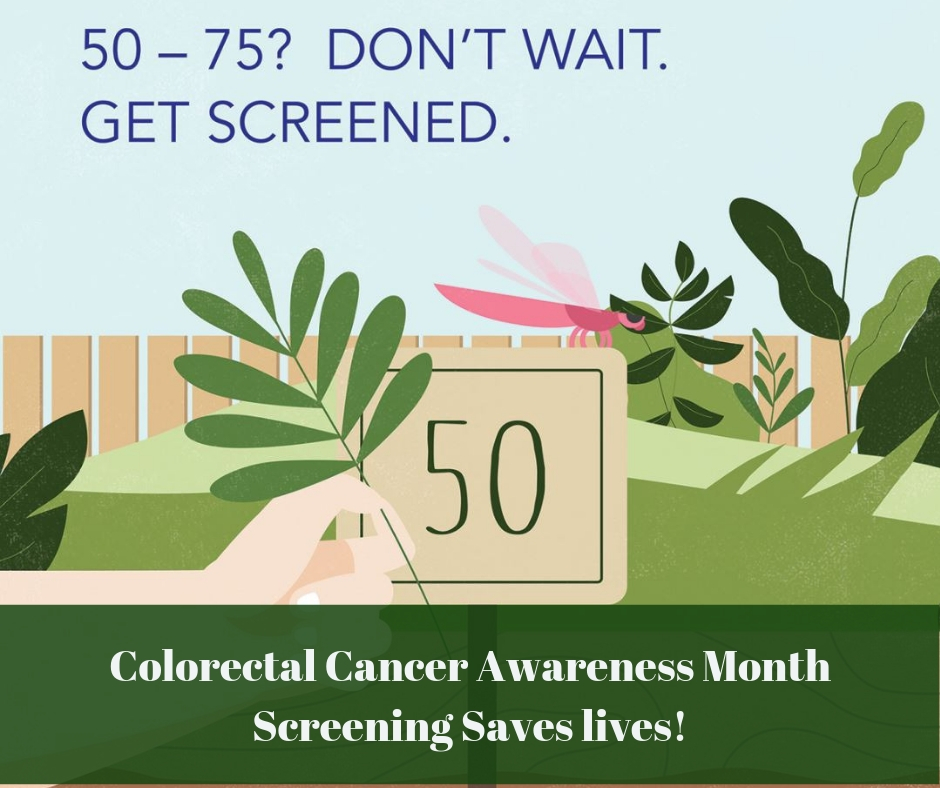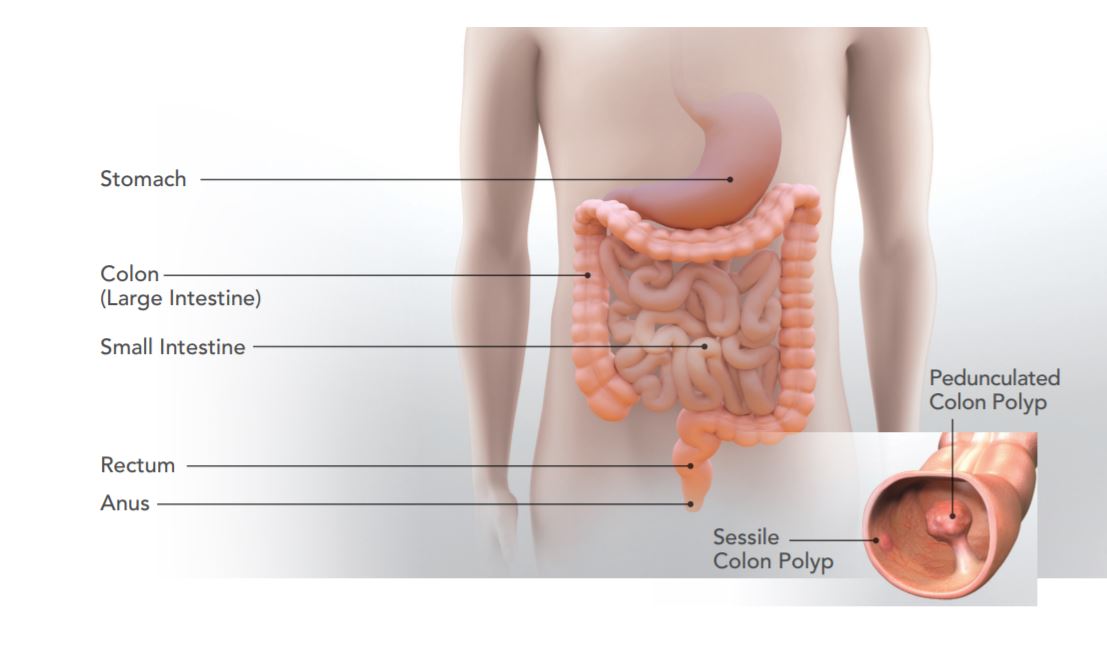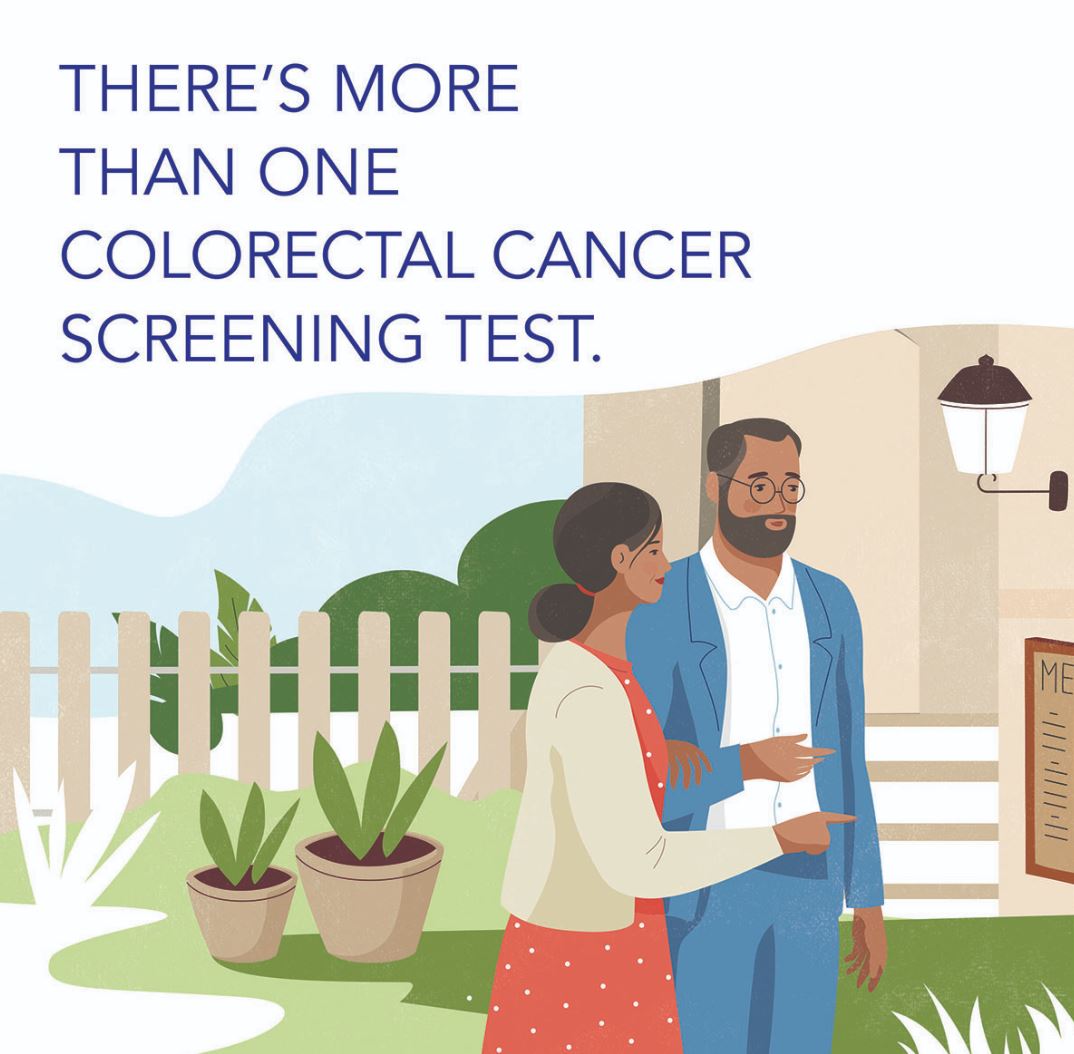
Colorectal Cancer: Screening Saves Lives

CDC’s Screen for Life: National Colorectal Cancer Action Campaign informs men and women aged 50 years and older about the importance of having regular colorectal cancer screening tests.
Screening tests help find precancerous polyps (abnormal growths) so they can be removed before they have a chance to turn into cancer. This prevents colorectal cancer. Screening also can find this cancer early, when treatment is most effective. However, about one-third of adults aged 50 or older (about 22 million people)—the age group at greatest risk of developing colorectal cancer—have not been screened as recommended.
What Is Colorectal Cancer?
Colorectal cancer is cancer that occurs in the colon or rectum. Sometimes it is called colon cancer. The colon is the large intestine or large bowel. The rectum is the passageway that connects the colon to the anus.

Who Gets Colorectal Cancer?
- Both men and women can get it.
- It is most often found in people 50 or older.
- The risk increases with age.
What Are the Symptoms?
Precancerous polyps and early-stage colorectal cancer don’t always cause symptoms, especially at first. This means that someone could have polyps or colorectal cancer and not know it. That is why having a screening test is so important.
Some people with colorectal polyps or colorectal cancer do have symptoms. They may include:
- Blood in or on your stool (bowel movement).
- Stomach pain, aches, or cramps that don’t go away.
- Losing weight and you don’t know why.
If you have any of these symptoms, talk to your doctor. They may be caused by something other than cancer. However,the only way to know is to see your doctor.
Are You at Increased Risk?
Your risk for colorectal cancer may be higher than average if:
- You or a close relative have had colorectal polyps or colorectal cancer.
- You have inflammatory bowel disease, Crohn’s disease, or ulcerative colitis.
- You have a genetic syndrome such as familial adenomatous polyposis (FAP) or hereditary nonpolyposis colorectal cancer.
People at increased risk for colorectal cancer may need earlier or more frequent tests than other people. Talk to your doctor about when to begin screening, which test is right for you, and how often you should be tested.
Screening Saves Lives
Colorectal cancer is the second leading cancer killer in the United States, but it doesn’t have to be. If you are 50 or older, getting a colorectal cancer screening test could save your life. Here’s how:
- Colorectal cancer usually starts from precancerous polyps in the colon or rectum. A polyp is a growth that shouldn’t be there.
- Over time, some polyps can turn into cancer.
- Screening tests can find precancerous polyps, so they can be removed before they turn into cancer. Screening tests also can find colorectal cancer early, when treatment works best.
Types of Screening Tests
The U.S. Preventive Services Task Force recommends that adults aged 50–75 be screened for colorectal cancer. The decision to be screened after age 75 should be made on an individual basis. If you are aged 76-85, ask your doctor if you should be screened. Several different screening tests can be used to find polyps or colorectal cancer. They include:

Stool Tests
- Guaiac-based Fecal Occult Blood Test (gFOBT): Uses the chemical guaiac to detect blood in stool. At home you use a stick or brush to obtain a small amount of stool. You return the test to the doctor or a lab, where stool samples are checked for blood.
How Often: Once a year. - Fecal Immunochemical Test (FIT): uses antibodies to detect blood in the stool. You receive a test kit from your health care provider. This test is done the same way as gFOBT.
How Often: Once a year. - FIT-DNA Test (or Stool DNA test): combines the FIT with a test to detect altered DNA in stool. You collect an entire bowel movement and send it to a lab to be checked for cancer cells.
How Often: Once every one or three years.
Flexible Sigmoidoscopy
For this test, the doctor puts a short, thin, flexible, lighted tube into your rectum. The doctor checks for polyps or cancer inside the rectum and lower third of the colon.
How Often: Every five years, or every 10 years with a FIT every year.
Colonoscopy
Similar to flexible sigmoidoscopy, except the doctor uses a longer, thin, flexible, lighted tube to check for polyps or cancer inside the rectum and the entire colon. During the test, the doctor can find and remove most polyps and some cancers. Colonoscopy also is used as a follow-up test if anything unusual is found during one of the other screening tests.
How Often: Every 10 years.
CT Colonography (Virtual Colonoscopy)
Computed tomography (CT) colonography, also called a virtual colonoscopy, uses X-rays and computers to produce images of the entire colon. The images are displayed on a computer screen for the doctor to analyze.
How Often: Every five years.
Free or Low-Cost Screening
Colorectal cancer screening tests may be covered by your health insurance policy without a deductible or co-pay. Where feasible, CDC’s Colorectal Cancer Control Program grantees provides free or low-cost screenings to eligible men and women.
Source:
CDC
Image:
CDC


Most Commented